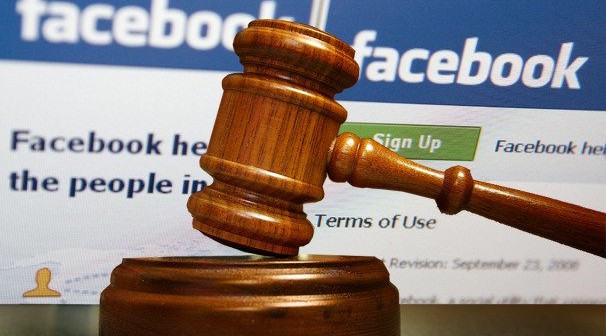The EUIPO’s recent declaration of invalidity of one of Banksy’s registered trademarks again raises the issue of the appropriate legal protection for street art
- The EUIPO decision on Banksy’s “Flower Thrower” Trademark
With a decision issued on September 14, 2020 (the “Decision”), the Cancellation Division of the European Union Intellectual Property Office (the “EUIPO”) declared invalid in its entirety the figurative trademark depicting the “Flower Thrower”, one of Banksy’s most iconic graffiti items (Application No. 12575155 – the “Trademark”), on the grounds that it was filed in bad faith.
The application for registration of the Trademark was filed in 2014 by Pest Control Office Ltd. (the “Proprietor”), a UK company acting on behalf of Banksy in order to keep the artist’s identity anonymous. In June 2019, Full Colour Black Limited (“Full Colour”), a company wishing to manufacture greeting cards depicting the Flower Thrower, challenged the Trademark.
According to Full Colour, Banksy has known for years that his works, including the Trademark, are widely photographed and reproduced on a massive and widespread scale by anyone who wishes to do so and has never used the Trademark to identify any good or service. Therefore, the purpose of the registration was to circumvent copyright law or the provisions of U.S. trademark law, avoiding evidentiary burdens relating to allegations of copyright infringement. Moreover, litigation based on copyright would be likely to affect the artist’s anonymity.
In October 2019, a few months after the initiation of the cancellation proceeding, Banksy opened an online store and a brick-and-mortar shop (not open to the public). However, in a statement he claimed he was merely trying to show use for the goods identified by his trademark applications and, therefore, prove that he was complying with the requirement under EU law to put the trademark to genuine use within five years of registration.
The EUIPO found that “it is clear” that, when the Proprietor applied for the registration of the Trademark, it did not have any intention of making genuine use of the sign to commercialize goods or provide services. Indeed, as clarified by the Decision, a trademark cannot be used to obtain an exclusive right to a sign for purposes other than those falling under the umbrella of its function: “It must be pointed out that another factor worthy of consideration is that he [Banksy] cannot be identified as the unquestionable owner of such works as his identity is hidden; it further cannot be established without question that the artist holds any copyrights to a graffiti. The contested EUTM was filed in order for Banksy to have legal rights over the sign as he could not rely on copyright rights, but that is not a function of a trademark”.
As a consequence, the Trademark registration has been declared invalid in its entirety due to bad faith of the applicant who, at least on the filing date, had no intention of putting it to genuine use.
- Street art and Copyright
Based on the Decision, graffiti may be registered as a figurative trademark, provided that the applicant’s aim is to genuinely use it to identify goods or service. Graffiti can also enjoy copyright protection, but it would likely be equally problematic for Banksy to gain protection for his work under a copyright perspective. Indeed, in a copyright lawsuit, Pest Control Office would be required to prove that it had acquired the copyright from Banksy and would therefore be forced to disclose the author’s identity, which is something Banksy wants to avoid at all costs.
Another issue concerns whether unlawful creative action may prevent graffiti from being eligible for copyright. Indeed, this kind of art originated as a type of “protest art” created on city walls belonging to third parties, presumably without their consent. Under Italian copyright law, the fact that the creation of a work is the result of an unlawful action might not be relevant to the work’s eligibility for copyright protection. Indeed, under Article 6 of the Copyright Law, copyright is originally acquired by the author from the moment the work is created as a specific expression of intellectual effort. There is no additional caveat. However, it is of critical import that there is no Italian law that specifically addresses the issue of the relationship between copyright and real estate rights to the property used as a graffiti “canvas”.
This is a point raised and resolved by the United States Supreme Court, which a few days ago rejected the appeal filed by the developer owners of the historic graffiti-covered property 5Pointz, located in Long Island City in Queens, New York. The decision under appeal was confirmed, and therefore the proprietors have been ordered to pay 6.7 million dollars to street artists and graffiti artists whose work was destroyed overnight. In this case, the U.S. Supreme Court affirms that under VARA (Visual Artists Rights Act) any modification that may affect the representation of a work of “recognized stature” is prohibited and requires at least 90 days’ notice to creators.
VARA is a federal copyright law dating to 1990 that in some ways represented an attempt to transpose into American law what in Europe we call “moral rights”, such as the right of authorship of a work. Given this precedent, the famous statement “copyright is for losers”, made by Banksy in his book Wall and Piece, is probably anachronistic now. If Banksy wrote the book today, he would probably say, “Trademark law is for losers. Copyright, however, is worth a little consideration”.



